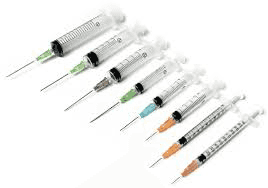You can get in touch with me by telephone or text during normal business hours, through the email form below, or by postal mail at the address listed below.
For emergencies, please call, do not use the contact form.
Contact
Contact Information
484-447-6945
P.O. Box 5011
Limerick, PA 19464
drjessvet.com
Tips and Tricks from an Equine Veterinarian
A Few Things to Make Horse-keeping Easier
Posted on: June 19, 2014

First of all, I am sorry to have missed a few weeks of blogging.
I have been very busy at work! I will try to stick to a schedule from now on. I thought I would write a more casual blog today, just to share some of the things I have learned over the years that have helped me in my work with horses. There are some tips and also some information that is useful to know when being around horses. Most of these things come up almost weekly in discussions with my clients, so hopefully you will find them helpful. Here goes!

A cc is equivalent to a mL (also written ml) in liquid volume. Veterinarians use these terms interchangeably to describe doses of medications administered in syringes to animals. A “cc” is a cubic centimeter, and a “mL” is a milliliter. So if you are using a syringe that is marked in cc and a veterinarian asks you to give a 3 mL shot of a medication, you give a 3 cc shot, and vice versa. Sounds easy right? Many people don't consider the terminology until it is after-hours at the clinic and then they have to call and ask the on-call vet! Good thing you know this and can share with your friends now!
Do you know the normal temperature, pulse and respiratory rate of a horse? You can take a horse's temperature rectally with a normal human thermometer. I prefer the flexible-ended 3-second read digital ones because they are safer, quicker and easier to read, but the older style glass ones work just fine. The average normal adult temperature in a horse is 100.5 degrees Fahrenheit; I am usually happy with a temperature less than 101 in a resting adult horse. Healthy horses that have been working hard may register even higher, often 104 or 105 temporarily. Young foals in the first week of life have normal temperatures of up to 102. Adult horses generally have a resting pulse or heart rate of between 32 and 40 beats per minute, with foals' being higher. You can learn to feel a pulse on a horse's face or to use a stethoscope to hear the heartbeat. Respiratory rates in adults usually range between 8 and 12 breaths per minute at rest, again foals are usually faster. You can either hear the breaths with a stethoscope or watch from a distance as the horse's ribs move with each breath. Any veterinarian would be happy to demonstrate how to do these things in person. These are all great bits of information to have on hand when calling your veterinarian in an emergency.

Although cleaning your horse's sheath is not a glamorous or fun job for either the horse or the person, it should be done at least once or twice a year depending on the horse. Again, it is best to have your veterinarian demonstrate the proper way to clean so that you do a thorough job (this is really difficult to explain in writing but easy to do in person). My quick tip here is to skip the commercial sheath cleaners available on the market and use Ivory liquid dish soap. It is gentle and rinses clean more easily than most products. It is also really helpful in dissolving the really gooey areas during sheath cleaning. Just be sure to rinse more than you think you need to after you are finished washing.
I encounter a lot of blood in my job with horses; it is just a fact of life for me. Getting my clothes and the horses clean afterward is another story. For removing blood stains from white areas on horses (but not on wounds!), peroxide works really well to dissolve the marks. Just hose off afterward to decrease any chance of skin irritation. For fabric, Oxiclean is amazing. I use the powder in almost every load of really dirty laundry, saddle pads and fleece girths and it always does a great job in saving things.
Do you know what to do when your horse is prescribed a medication that comes as hard pills that don't dissolve easily (like doxycycline)? Some pill medications dissolve really nicely in a syringe filled with warm water (like SMZ tablets), but others will have to be ground up. A small, inexpensive coffee bean grinder makes what could be a tedious job (bashing pills in a Ziplock bag with a hammer) a lot easier! Just count out one dose (never do more than one dose at a time and then expect to be able to figure out how much equals one dose of powdered pills--- it just doesn't work), put them in the grinder and turn it on until the pills are well ground up. Then you can make a slurry in a large dose syringe with water, the powdered medication, and even some molasses to make it more sticky and tasty if you like. I would advise cleaning the grinder between different medications and keeping it separate from the family coffee grinder for actual bean use.
Hoof abscesses are a common problem in horses that most everyone will have to treat at some time. Some horses don't mind having their feet soaked, but others do not stand well in a bucket. I avoid trying to soak hooves in plastic water buckets because they crack easily when the horse stands in them, and they are easily tipped over during soaking. I prefer to use one of the short black rubber feed tubs; they come in different sizes and are deep enough for the water to just cover the coronary band. They don't crack easily, don't require a lot of water to fill and I have a bunch of them in the barn already. Some people also use emptied 5 liter IV fluid bags tied at the top to soak, but I prefer the tub method as it isn't as spooky for the horse being treated.
Sometimes horses don't want to stand still for things we need to do, and it is usually when we don't have an extra person around to help out. A twitch is a great tool if you are comfortable applying it properly (ask your vet to show you), but the best ones require a second person be involved. There are one-person twitches on the market, but I don't like them as they are usually metal and have the potential to be very dangerous if the horse becomes upset. When I am by myself pulling manes, body clipping or cleaning sheaths and I need some help, I make a quick twitch from items usually found in the barn. You only need a piece of baling twine, a double-ended snap (like the kind used to hang water buckets), and a horse with a regular halter (won't work with a rope halter) on. Make a loop of twine large enough to fit your loosely fisted hand through, tie the ends together, and clip the snap on it. You can then apply the loop as you would a normal rope or chain twitch, twist as usual and snap the free end of the snap to the higher of the side rings on the halter. It should hold firmly if the halter is adjusted properly. Just remember to remove the twitch when you are finished with the job, and not to leave it on for more than about 45 minutes to an hour maximum.

Many horses have a tendency to eat their grain or pellets too quickly. This can cause “choke”, an obstruction of the esophagus, a treatable condition but an emergency none-the-less. There are many ways to slow down these horses, including feed tubs purpose-made to make eating take longer, but these are large and expensive. Often just putting the horse's salt block in the feed tub with the grain will cause him to eat more slowly, although sometimes the horse will throw the block on the ground and then eat as quickly as he wants! The same can be said about putting a large, smooth rock in the feed tub, just make sure it is not small enough to be consumed. My favorite product for horses that eat too fast and have choked, or just need to be kept busy, is a feed ball. They are made especially for horses and are the size of a basketball, with a trap door in one side to pour in the feed and a quarter-sized hole in the other side that lets only a few pieces of grain out at a time as the ball is rolled around the floor. When I used one for my horse I would clear an “alleyway” free of bedding along the front of the stall for him to roll it and eat the pellets that came out without getting mixed into his shavings.